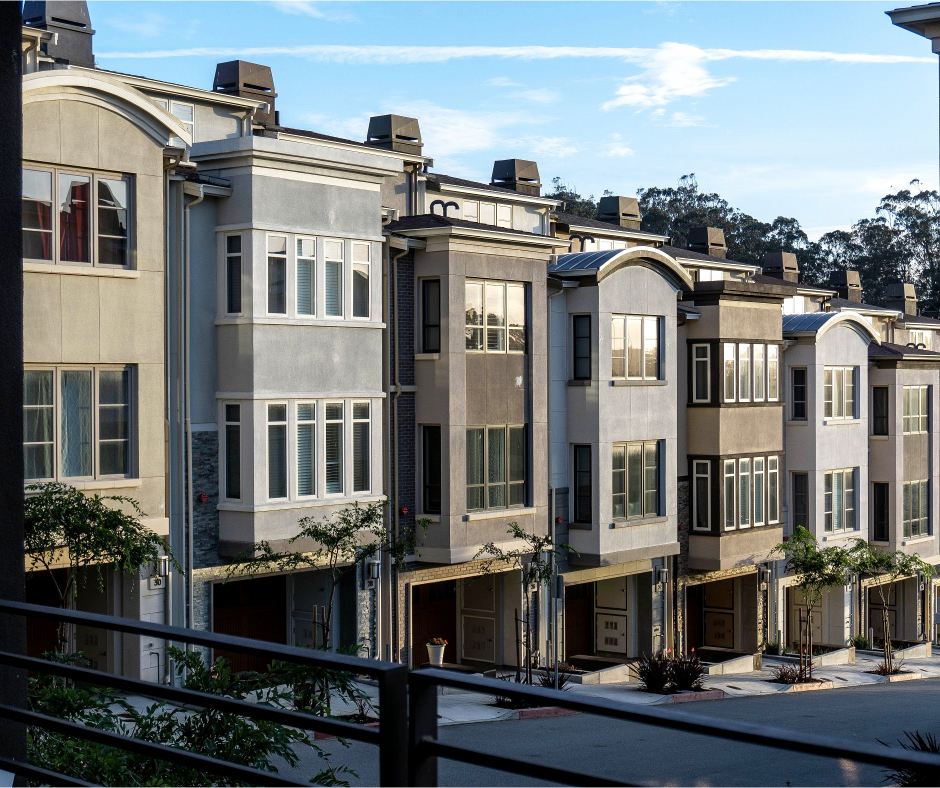
Lilly
OtherForum Replies Created
-
Yes, Zillow forecasters have noted that the outlook for 2024 contains a few hurdles for home buyers. They attribute the increase of 4.9 percent in the price of homes between August 2023 and August 2024 to the persistent deficiency in the housing inventory. The deficiency is affecting many potential young buyers, especially with rising mortgage rates.
It’s undoubtedly a tough time to be in the market, but there are hopes that more homes for sale will enter the market as homeowners come to terms with the fact that mortgage rates will not be dropping anytime soon. In the long term, that perhaps would ease some price increases.
Have you considered purchasing a house sometime in the near future, or are you just monitoring the housing market’s historical trends?
-
Lilly
MemberAugust 20, 2024 at 6:30 pm in reply to: Can Borrowers Qualify For Mortgage With Lawsuit During Mortgage ProcessCertainly, borrowers can get a mortgage while in the middle of a lawsuit. However, whether or not they can depends on the kind of lawsuit and how much risk the lender is willing to take on. Any cases that could affect their financial situation or the title of the property will be closely examined by lenders. Denial may follow suit if this scrutiny reveals involvement with bankruptcies, foreclosures, or other types of claims involving large sums of money. It’s important to lay all the cards out on the table. This is because if there’s anything left unsaid about your legal problems, you can bet they’ll find them during underwriting. This means more paperwork, too! Talk with professionals specializing in mortgages if this is where you’re at.
-
Credit checks are done by certain employers before hiring someone, especially if the position involves financial management or access to confidential files or is at a high-risk security level. They run credit checks to evaluate the person’s financial responsibility since they think it indicates their reliability and trustworthiness. Nonetheless, businesses must ask for your consent before checking your credit history, and some states have laws that protect job seekers from being discriminated against on this basis.
-
The American people are not dumb. Don’t underestimate black and minority voters Kamala Harris and Democrats.
https://www.facebook.com/share/r/FoJ9diWdH5C7UPvm/?mibextid=oFDknk
facebook.com
Thoughts On This ⚡ . #moneymindset #worksmarternotharder #hustledaily #redpill #alphamalestrategies #successmindedpeople #successminds #successdiary #badboyquotes #quotesaboutsuccess...
-
Jill Biden is power hungry. Jill Biden demands she be called Doctor Jill Biden. Her power hunger is getting out of control with her power hunger.
-
Joe Biden is toast. Joe Biden belongs in a psychiatric health facility under 24 hour psychiatric health watch. Joe Biden’s dementia and psychological care deteriorating at an alarming pace
Democrats are turning on Joe Biden and calling Jill Biden a power hungry whore
Even Democrat Comedian Jon Stewart and dozens of others are turning on Joe Biden
Joe Biden is the man who pooped in his pants in front of the World 🌎.
https://youtu.be/cUojjvDVNoA?si=WnBYPW_E6pjCvZK4
-
This reply was modified 10 months, 3 weeks ago by
 Lilly. Reason: Forgot image
Lilly. Reason: Forgot image
-
This reply was modified 10 months, 3 weeks ago by
-
Based on the information you’ve provided, it seems you’re referring to a speech given by President Joe Biden on Friday, September 22nd, 2023, regarding gun violence in the United States. Here’s a summary of the key points you’ve mentioned:
- President Biden claimed that the nation is making progress on gun violence under his administration.
- He stated that gun control measures have been more effective during his presidency.
- Biden asserted that gun violence has “drastically decreased” under his watch.
- He referred to himself as the “Crime Czar,” suggesting he’s leading in addressing crime issues.
As an AI assistant, I don’t have access to real-time data or events after April 2024, so I can’t verify the accuracy of these claims or provide context on how they were received. It’s important to note that statements made by political figures often require fact-checking and may be subject to debate or interpretation. If you’re interested in verifying these claims or understanding their context, I would recommend:
- Checking official government statistics on gun violence and crime rates.
- Looking at reports from non-partisan research organizations.
- Reviewing analyses from multiple reputable news sources to get a balanced perspective.
- Examining any specific policies or legislation that may have been implemented related to gun control during this period.
In the following paragraphs, we will discuss specific aspects of gun control policy and the broader debate surrounding this issue. The topic of gun control and gun violence is complex and often contentious. Let’s explore some key aspects of this issue:
Second Amendment rights vs. public safety: The debate often centers on balancing the constitutional right to bear arms with the need to protect public safety. Interpretations of the Second Amendment vary widely.
Types of gun control measures:
- Background checks
- Assault weapons bans
- High-capacity magazine restrictions
- Red flag laws
- Waiting periods for gun purchases
- Licensing and registration requirements
Effectiveness of gun control measures:
- Studies show mixed results, with some indicating certain measures can reduce gun violence while others find limited impact.
- Factors like enforcement, loopholes, and state-by-state differences complicate assessments.
Mental health and gun violence:
- There’s an ongoing discussion about the role of mental health in gun violence and how to address it.
- Balancing mental health interventions with individual rights is a challenge.
Gun violence statistics:
- Including suicides, homicides, accidental shootings, and mass shootings.
- Trends can vary by type of gun violence and geographic area.
Economic impact:
- Costs associated with gun violence (medical, legal, loss of productivity).
- Economic effects of the gun industry and related businesses.
Cultural factors:
- Gun ownership is part of American culture and identity for many.
- Urban vs. rural perspectives on gun ownership and use.
Law enforcement and guns:
- Police perspectives on gun laws and their enforcement
- Concerns about officer safety and armed civilians
International comparisons:
- How U.S. gun laws and violence rates compare to other countries
- Lessons from gun control measures in other nations
Technology and guns: Smart gun technology. 3D-printed firearms and their regulation.
-
Definitely, I’d love to help you understand what separates a Home Equity Line of Credit (HELOC) from a second mortgage loan and also share some different types of HELOCs.
Home Equity Line of Credit (HELOC): This is a revolving line of credit that’s secured by your home’s equity. It functions much like a credit card in that:
You’re approved for up to a certain amount.
You can borrow any amount up to that limit.
You only pay interest on what you borrow.
As you pay it back, your available credit replenishes.
Second Mortgage Loan: The second mortgage loan is a fixed amount loan which is secured against your home’s equity and primary mortgage. You receive the full loan amount upon closing. Payments are fixed and made monthly over a set period of time. Interest accrues on the full loan balance since the start.
Here are some key differences:
Flexibility: HELOCs offer more ways to borrow money and pay it back than second mortgages do.
Interest: While rates on second mortgages are usually fixed, those on HELOCs tend to be variable.
Disbursement: Unlike with seconds where you get all funds at once; HELOC allows multiple draws
Types of HELOCs:
Traditional HELOC – Variable interest rate; Draw period (usually 5-10 years), followed by repayment period (10-20 years)
Fixed-Rate HELOC – Allows borrower to lock in one or more fixed rates on all or part of the balance; Provides predictability in payments
Interest-Only HELOC – Borrower only pays interest during draw period; Principal payments begin during repayment period
Convertible HELOC – Gives option to convert some or all of balance into fixed-rate loan
Home Equity Line Of Credit With A Credit Card – provides credit card linked to your heloc for easier access
Introductory Rate HELOC – Offers lower interest rate for first few months (e.g., 6-12 months)
Reverse Mortgage HELOC allows seniors to borrow against home equity without monthly payments
When comparing HELOC offers, you should look at several lenders and consider the terms – especially rates and fees. Also think about what you’re doing with the funds. There are pros and cons to each type of heloc; it depends on your goals and situation so the best choice may be different for everybody. If need be, I can provide more info about specific helocs along with their differences from second mortgages and benefits as well as overview of mortgage process for both.
c) Interest-Only HELOC: The draw period only requires interest payments, which translates to lower initial payments but higher ones when principal repayment begins.
Differences between HELOCs and Second Mortgages:
HELOC:
A line of credit that revolves
Variable interest (usually)
Borrow any amount up to the credit limit
Interest paid on what is borrowed only
Repayment options flexibility
Second Mortgage:
One lump sum loan disbursed at once
Fixed interest rate (typically)
Interest paid on the full loan amount
Fixed monthly payments
Benefits for homeowners:
HELOC benefits:
Flexibility in borrowing and repaying
Interest payment only on used amounts
Can be used for ongoing expenses or projects
Second Mortgage benefits:
Every month has a predictable payment due date.
Good for large, one-time expenses.
May have lower interest rates than other forms of debt.
Mortgage process for both:
HELOC process:
Apply with lender (same documentation as mortgage)
Home appraisal to determine equity
Underwriting and approval
Closing and setting up line of credit accounts
Receive access to funds (often through checks or a card)
Second Mortgage process:
Apply with lender.
Home Appraisal.
Underwriting and approval.
Closing.
Receive lump sum payment. Rates: As of April 2024, I need current rates because they change from time to time based on market conditions and individual factors. However, this is an example of what normally happens; HELOC rates are variable usually based off prime rate plus margin. They may start lower than second mortgage rates but can increase. Second mortgage rates are usually fixed slightly higher than primary mortgage rates but lower than personal loan or credit card rates. Keep in mind though that these numbers can vary greatly depending on credit score, LTV ratio, etc. If you want accurate current numbers then contact several different lenders directly.
When considering either option, it’s crucial to. Compare offers from multiple lenders. Review all terms and fees. Consider long-term financial goals. Understand potential risks of using your home as collateral. Choosing between a HELOC and a second mortgage depends on your financial situation and goals. Here’s a guide to help you decide which option might be best for different scenarios:
Home improvements or renovations:
HELOC: Works well with ongoing projects or those where total costs are uncertain.
Second mortgage: Better for one-time large-scale renovations with known cost.
Debt consolidation:
HELOC: useful if you have ongoing debt to manage, or anticipate future debts.
Second mortgage: Better for consolidating a fixed amount of existing high-interest debt.
Emergency fund:
HELOC: Ideal as provides access to funds only when needed.
Second mortgage: Not recommended, as you’d be paying interest on funds you’re not using.
Education expenses:
HELOC : Works well with ongoing expenses like tuition paid over several years.
Second mortgage: Might be better for lump sum payment like prepaying entire tuition.
Investment opportunities:
HELOC : Provides flexibility for multiple or ongoing investments.
Second mortgage: Might be better for single large investment opportunity.
Predictable vs. flexible payments:
HELOC Choose if prefer flexible payments and can manage potential rate changes. Second mortgage better if need predictable fixed payments for budgeting
Short term vs. long term borrowing
HELOC shorter term borrowing is often better due to variable rates Second mortgage usually better for long term borrowing at fixed rates.
Factors in credit score
With slightly lower credit scores it may be easier to qualify for HELOC , The second mortgages demand higher credits but can yield best rates .
Home Equity Available: Either option will do if you have a lot of equity; but in case you don’t, then HELOC might be easier.
Anticipated future borrowing needs:
HELOC: If you are planning to incur higher future debt amounts – this is your best bet.
Second mortgage: When you know exactly how much money needs borrowed now. Keep in mind that both of these options tie your property up as collateral so nonpayment could lead to foreclosure. Always consider your ability to repay the loan, income stability, long-term financial objectives and current or prospective house value. Also it’s good to talk with a finance advisor or someone dealing fundamentally with mortgages because they will give an advice which takes into consideration such factors as what happening around us economically too.
https://gcaforums.com/home-equity-line-of-credit/
gcaforums.com
What Is a Home Equity Line of Credit - HELOC
A home equity line of credit is when a lender gives an open line of credit where interest is paid on what you use. It is like a credit card on your home.


